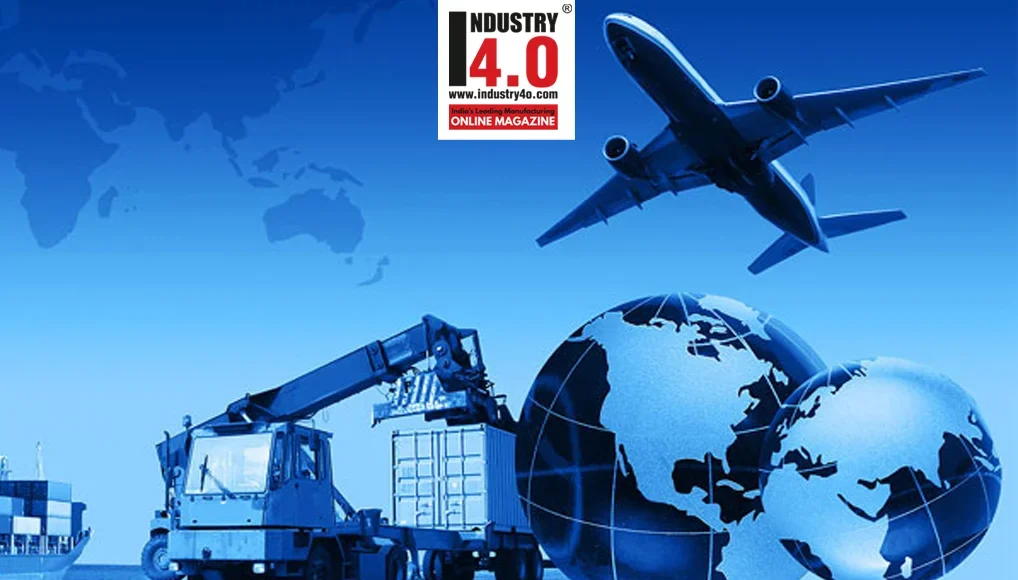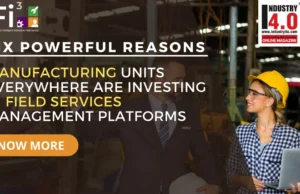Renowned entrepreneur and venture capitalist Peter thiel in one of his best sellers ‘Zero to One’ opines that globalization takes a horizontal trajectory of growth whereas innovation takes a vertical trajectory and the world has seen lot of globalization right from the late 1850s till date whereas innovation has been largely restricted to technology i.e. the IT and Communication infrastructure of the world.
Well I may be critical on some aspects of the opinion but yes for most of its part its true. Having said that, let us not forget how globalization has helped the entrepreneurs, particularly the MSME to look at the whole wide world as their market place and aided by internet, they have outgrown themselves from being MSMES into large multinational corporations today.
Even today MSME’s are the backbone of the Indian Economic system, about 6.33 crores MSMES contribute to a major portion of the GDP of this country. This fact is being evident in the COVID – 19 measures announced by North block, where a large chunk of the fiscal and non-fiscal measures were attributed to MSME’s.
Keeping this on one side for a moment, let us shift gears to Covid-19, which like any other aspect, has two sides to it.
I would like to stress on the positive sides of COVID, particularly from an Indian perspective as I believe there lies an opportunity in every crisis.
India as it stands today seems poised to gain the most out of this change in the post COVID world. Entrepreneurs, Businessman, and the Government of India seem to agree with this more often than not
As the world begins to shape its post Covid recovery path, India and particularly its MSMEs will have to make most of the underlying opportunities that lies in every crisis and soar high which will help the Indian Economy in terms of increase in employment opportunities & per capita income and export performance.
With that in mind, this article aims to explore the benefits that are available to exporters who will look to exporting their produce from India to across, taking advantage of the current anti china sentiment brewing around. While being atmanirbhar is the slogan in limelight, we need to understand atmanirbhar is not about having a closed economy but to be self-sustainable and thereafter service the global market from India and hence the innate principle of Make in India has always been a part of the Atmanirbhar Bharat movement.
This is entirely reflected in the export benefits that accrue today to Indian entrepreneurs and Indian exporters.
Foreign Trade Policy constituted under the Foreign Trade (Development and Regulation) Act, 1992 forms the foundation of conducting international trade in India. It lays down the pathways surrounding import and export in India.
Foreign Trade Policy bestows an array of benefits on the exporters which is what we will be deep diving into some of the major onesapart from other benefits coming from the tax laws and other relevant statutes.
Advance Authorization Scheme
From being erstwhile named as Advance License to having a pre import condition, Advance Authorization Scheme has traversed through a lot of changes, adapting itself to the dynamics of global trade. Advance Authorisation Scheme aims to reduce the cost burden to an exporter by exempting customs duties and IGST on its related imports thereby enabling the export product to be priced competitively. Also the cash flow cost of paying IGST though it is available as set off but it would be realisable as refund only after a point of time from exports and hence contributes towards the working capital cost.
This is a primary benefit that any exporter needs to understand and utilize. Statistically Advance Authorization is a widely used scheme though certain sectors are still not entirely open and used to getting benefit under this scheme. I urge all the exporters to explore this possibility which will not only help you to conduct your business efficiently in terms of working capital savings on custom duties and making their export product price competitive.
An application of an advanced license in addition to its benefits requires some procedural compliances like Value addition , SION norms etc. But due to the brevity of this article we are not dealing with all these technical procedural aspects in this article. However, readers can find it in Chapter 4 of the Foreign Trade Policy (2015-21).
Export Promotion Capital Goods (EPCG) Scheme:
This scheme is often touted as the Advanced authorisation scheme for Capital goods. Ithas helped a lot of manufacturers and service providers to expand their business in terms of adding additional capacity.
While Advance Authorization is for allowing duty free import of Inputs, Components, Catalysts, Fuel etc. EPCG Scheme aims at allowing duty free import of capital goods i.e. Plant and Machinery and other capital goods which are used for the purpose of manufacturing the resultant export product.
EPCG Schemes unlike advance license determines the export obligation based on the duty savings made on import of Capital Goods.
To explain further, let us say you would like to import X Machinery worth Rs. 1Cr on which a customs duty of Rs. 25 Lacs needs to be paid.
EPCG Scheme would allow you to import these goods without making payment of this Rs. 26 Lacs subject to the condition that you undertake to export Rs.1.5 Crores(26L * 6 times) i.e. duty saved multiplied by 6 times worth of export goods over a period of 6 years.
This equally applies to a service provider as well which has benefited a lot of service providers.
Duty Drawback Scheme
This is a duty remission scheme which is in vogue in almost all the WTO member countries. Duty Drawback Scheme aims to refund the customs duty paid on inputs/components at the time of import.
This scheme has two routes of taking this refund:
a. All Industry Rate (AIR) Route
b. Brand Rate Drawback Route
Under the AIR route, drawback is provided as a percentage of the FOB value capped with a limit, HSN wise as per the drawback schedule.
In case of an unfavourable AIR rate, then the exporter has the option of claiming actual duty paid on inputs/components and that is what is called as brand rate drawback route.
While AIR is availed by most of the exporters, brand rate drawback is a highly unexplored option which could give higher refunds than the AIR route.
Advance Authorization and Duty Drawback give the same benefit but in a different manner i.e. Advance License grants ab initio exemption from payment of customs duties on import of inputs/components while duty drawback provides post facto refund of the same customs duty upon export of resultant products. Hence exporters should do a Cost Benefit Analysis before considering any of the options.
Deemed export under GST
Under GST supplies to an EOU/Advance Authorization holder/EPCG Authorization holder qualify as deemed exports under Section 147 of the CGST Act, 2017. You might be wondering how Advance Authorization/EPCG can be used for local procurement of goods when all that we have discussed in the earlier paras are about imports.
Let us not forget that an Advance Authorization can be converted into a Advance Relaease Order and a EPCG Authorization can be converted into a invalidation letter which will allow the exporter not only import inputs/capital goods without payment of customs duties but also procure these goods locally without payment of GST.
An exporter can take benefit of the deemed export section in GST by procuring these goods without payment of GST wherein the supplier of such goods would be able to take refund of whatever GST he has paid.
Special Economic Zones & Free Trade Warehousing Zones Manufacturer Exporters/service providers who intend to export majority of their resultant products/are engaged storage and warehousing of goods imported from various countries for distribution into India or outside India in can set up their unit in a Special Economic Zone/FTWZ thereby exempting them from customs duties and GST from all their procurement be it local or import and also provides a variety of other benefits from the FEMA perspective, Income Tax perspective.
SEZ being a worldwide phenomenon aims at creating exclusive economic space wherein exporters can produce goods for catering to the global market without being concerned about the laws governing space outside SEZ i.e. DTA.
EOU/EHTP/STPI/BTP
SEZ units can be set up only in Special Economic Zones as designated and developed by the government of India along with developers. Whereas EOUs can be set up almost in any part of the country without any geographical boundaries.
EOUs are allowed to import goods without payment of duty by following the Import of Goods at Concessional Rate of Duty Rules 2017.
They have to pay GST on local procurement of goods unless they adopt deemed export procedure in Section 147.EOUs also have variety of entitlements which make them a suitable option for an exporter of smaller size particularly in the MSME segment who has majority exports to establish an EOU and claim benefits without much of an infrastructure cost incurred in the case of SEZ.
EHTP / STPI / BTP are sector specific EOU policies which promote electronic hardware, software & Bio Technology exports by providing relaxations/benefits apart from the EOU scheme which is suitable for the respective industries.
Customs Bonded Warehousing Scheme
Tectonic shift has happened in the way in which bonded warehousing was dealt with by the Government of India. With the introduction of the revamped customs bonded warehousing scheme, it has been made “no strings attached”.
Historically customs bonded warehousing would be storage of goods in a designated area with the physical supervision from the customs department (CBIC). However, now, customs bonded warehousing scheme has been put through the lens of ease of doing business, thereby making it free of a lot of operational and compliance hassles.
Under the new customs bonded warehousing scheme any person can set up a new /convert an existing premise into a customs bonded warehouse wherein he can undertake manufacturing activity or simply trade in goods and customs duty is payable only when either the imported components or the resultant product is moved to DTA.
What is surprising is that department does not demand any interest on such payment of customs duty as and when it is being paid at the time of clearance of goods to DTA.This facility is not only available for inputs/components but is also available for capital goods which are used in the customs bonded warehouse for the purpose of manufacturing. Under the new scheme the customs bonded warehouse can not only import goods but also procure goods locally upon payment of GST. This virtually allows any manufacturer/trader to operate as a customs bonded warehouse even though most of his clearance might be to DTA.
Merchandise Export from India Scheme (MEIS) / Remission of Duties & Taxes on Export Product Scheme
MEIS is an export promotion scheme which provides benefit in the form of duty credit scrip calculated as a percentage of the FOB value of exported goods. The rate of MEIS will depend on the HSN code of the underlying product.
MEIS aims at rewarding exporters in order to offset the infrastructural inefficiencies in supply chain. However this scheme is going to be discontinued shortly from 1st January 2021(As of now).
It will be replaced by the Remission of Duties Taxes on Export Product Scheme (RODTEP) which would give a similar benefit as a percentage of the FOB value of goods.
The genesis of this scheme dwells in the dispute raised by WTO member countries before the WTO dispute panel alleging that India is providing a prohibited subsidy in the form of MEIS.Hence the RODTEP Scheme which will replace the MEIS Scheme would be a WTO compliant subsidy which will only provide benefit to the extent of taxes incurred as cost for the manufacture of the resultant product.
The Government is closely working with various export promotion councils to gather data regarding the incidence of tax on all export products which becomes a cost to the exporter. I urge all the exporters to submit exhaustive data to their respective EPC’s so that the government is armed with enough of proof to give a reasonable rate of reward in the form of RODTEP.
Service Export from India Scheme (SEIS)
From being SFIS to becoming SEIS this scheme has been discussed and debated in multiple forums including the High Courts of the country and floor of the parliament. Recently, just before the Covid outbreak could begin in India, the Honourable Minister of Commerce and Industry Mr. Piyush Goyal brought up the issue of continuing the SEIS scheme in the parliament.
Easily said, SEIS Scheme is the MEIS Scheme for services. It provides incentive in the form of duty credit scrips calculated as a percentage of the net foreign exchange earned by an exporter of service which can used for payment of Custom duties akin to MEIS.
Authorised Economic Operator (AEO) Scheme
AEO Scheme is a trust based certification programme wherein an importer/exporter who is certified as an AEO is entitled to various privileges under the Customs Act 1962.
In layman terms, it is like a loyalty program similar to airline and credit card loyalty points. AEO also has a system of Tier Based classification and once an exporter demonstrates that he has robust systems / process / controls in place from the customs & supply chain perspective, you are granted a Tier 1 AEO Status and as you go up the ladder of Tier, the privileges associated also increases.
The benefits under this scheme range from direct port entry, direct port exit, deferred payment of customs duty , waiver of bank guarantee, appointment of a customs relationship officer, faster disbursal of Drawbacks/IGST refunds to even faster adjudication of cases under various acts governed by the CBIC.
Other benefits in Foreign Trade policy and other miscellaneous acts:
Government of India not only provides incentives in the form of refunds/duty credit schemes but also provides funds for exporters to explore various global markets. Schemes such as the Status holder schemes, Market Access Initiative, Market Development Assistance and Transport & Marketing Assistance Schemes etc. Also there sector specific incentives like ROSCTL for textile industry which can help in reviving.
Trade Agreements (TA)
Last but not the least, apart from all the above schemes under the Foreign Trade Policy , significant amount of benefit in the form of concessional rate of duty on imports or restriction free exports emerge from various Trade Agreements entered between India and various countries across the globe.
A Trade Agreement can be in the form of a Preferential Trade Agreement, Free Trade Agreement, Comprehensive Economic Cooperation Agreement or a Comprehensive Economic Partnership Agreement. Under each of these agreements multitude of benefits accrue to an importer/exporter. A deep dive on to FTAs could lead to a realignment of the supply chain which would ultimately result in significant cost reduction or revenue enhancement.
I hope all the above export policies and benefits would validate my stand that the post Covid world is going to present all the opportunities in crisis to gain as far as India is concerned. However it is upon all of us as professionals, entrepreneurs, employees to invest our time and effort in understanding the above benefits in detail and make the best out of it which only lead to India arriving at a trade surplus rather than a trade deficit position.
Similar to the approach taken by the Indian Government on Hydroxychloroquine and PPE durig the Initial days of the pandemic wherein they first ensured that the domestic demand is met and thereafter gave equal importance to global demand and let the country’s flag soar high in the global map, Indian exporters should not only adopt the AthmaNirbhar mantra and supply for local consumption and also should be ready to cater to the global demand over and above local consumption.
I hope this article contributes in a small way towards that !
About the Author

Mr. Satish.S., Managing Director of DAA Consulting Pvt.Ltd., (www.daa-india.com) is an associate member of the ICAI and CWAI with experience in the industry and consulting spanning 33 Years in the field of indirect taxation. He has worked as head of indirect tax for L&T Group handling various issues including global operations and commercial matters. He has worked in PwC as Senior Partner.
In his long stint in the industry & during his period as partner in PwC, he has advised on several issues including ERP Implementation, FTP, Regulatory matters from taxation and commercial perspective, Setting up/Amalgamation/Merger of business verticals, Representations before various government authorities and tax litigations before adjudicating/appellate authorities including Tribunal.
He is a prolific speaker in august forums and conferences conducted by industry/trade bodies like Aditya Birla Group, NACEN, GSTN to name a few. He is also a Director on the Board of a Technology Solutions Provider called Spearhead, Bangalore. He can be contacted at +91 – 9930989096 / [email protected].









